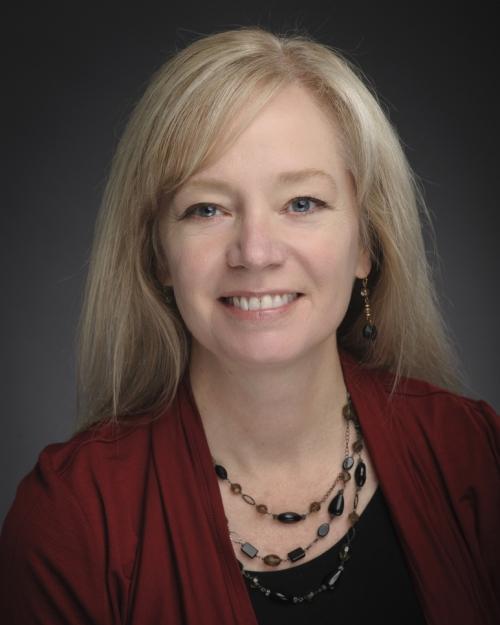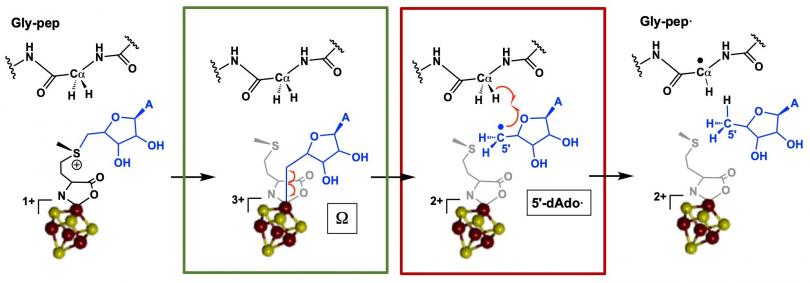 Bio: Joan B. Broderick is Professor and the Department Head of the Chemistry and Biochemistry Department at Montana State University. She is a bio-inorganic chemist who studies how iron-sulfur clusters and S-adenosylmethionine (commonly known as SAM) are used by nature to initiate radical reactions essential to life. Other research interests include the biological assembly of complex metal clusters, and the trafficking, storage, and utilization of iron and sulfur in biology. Broderick graduated from a small all-girls high school in Bellevue, Washington, where she first became intrigued by the interface of chemistry and biology. Broderick has an undergraduate degree from Washington State University (1987), where she worked in both biochemistry and inorganic chemistry labs. She earned an M.S. and a Ph.D. (1992) from Northwestern University with Tom O’Halloran, where she was a National Science Foundation Graduate Fellow studying mechanistic aspects of the non-heme iron enzyme chlorocatechol dioxygenase. She was an American Cancer Society Postdoctoral Fellow with JoAnne Stubbe at Massachusetts Institute of Technology where she focused on mechanism of the coenzyme B12-dependent ribonucleotide reductase. Broderick was an assistant professor at Amherst College (1993 – 1998), where she began her work on radical SAM enzymes with undergraduate research students. She moved to Michigan State University in 1998, where she was assistant, associate, and full professor before moving to Montana State University in 2005.
Bio: Joan B. Broderick is Professor and the Department Head of the Chemistry and Biochemistry Department at Montana State University. She is a bio-inorganic chemist who studies how iron-sulfur clusters and S-adenosylmethionine (commonly known as SAM) are used by nature to initiate radical reactions essential to life. Other research interests include the biological assembly of complex metal clusters, and the trafficking, storage, and utilization of iron and sulfur in biology. Broderick graduated from a small all-girls high school in Bellevue, Washington, where she first became intrigued by the interface of chemistry and biology. Broderick has an undergraduate degree from Washington State University (1987), where she worked in both biochemistry and inorganic chemistry labs. She earned an M.S. and a Ph.D. (1992) from Northwestern University with Tom O’Halloran, where she was a National Science Foundation Graduate Fellow studying mechanistic aspects of the non-heme iron enzyme chlorocatechol dioxygenase. She was an American Cancer Society Postdoctoral Fellow with JoAnne Stubbe at Massachusetts Institute of Technology where she focused on mechanism of the coenzyme B12-dependent ribonucleotide reductase. Broderick was an assistant professor at Amherst College (1993 – 1998), where she began her work on radical SAM enzymes with undergraduate research students. She moved to Michigan State University in 1998, where she was assistant, associate, and full professor before moving to Montana State University in 2005.
 Abstract: Enzymes of the radical S-adenosyl-l-methionine (radical SAM, RS) superfamily, the largest in nature, use a [4Fe-4S] cluster and SAM to catalyze remarkably diverse radical reactions. RS enzymes that act on protein or peptide substrates include the glycyl radical enzyme activating enzymes (GRE-AEs) important in anaerobic metabolism, and enzymes that catalyze epimerizations, splicing reactions, and cross-linking reactions during maturation of ribosomally-encoded, post-translationally modified peptides (RiPPs). We are using freeze-quench techniques coupled to electron paramagnetic resonance spectroscopy to gain insights into mechanistic steps and reaction intermediates in these types of reactions. We examine the reaction of the GRE-AE pyruvate formate-lyase activating enzyme (PFL-AE) with peptide substrate mimics such as RVSG734YAV, a model for the site of glycyl radical formation on the native substrate pyruvate formate-lyase, as well as RVS(Dha)YAV, which has a dehydroalanine in place of glycine and results in a change in reactivity from H-atom abstraction to adenosylation of the double bond of the Dha residue. Time-resolved freeze-quench electron paramagnetic resonance spectroscopy shows that at short mixing times for both substrates result in formation of the central organometallic intermediate, Ω, in which the adenosyl 5′C is covalently bound to the unique iron of the [4Fe-4S] cluster. Freeze-trapping the reactions at longer times reveals the formation of subsequent intermediate/product radicals dependent on identity of the substrate. Of central importance, freeze-quenching at intermediate times reveal the conversion of Ω to the nominally ‘free’ 5′-dAdo• radical, which can be observed to convert to a peptide-based radical upon cryo-annealing. These observations reveal the 5′-dAdo• radical to be a well-defined intermediate, caught in the act of subsequent chemistry, providing new insights into the mechanistic steps of radical initiation by radical SAM enzymes.
Abstract: Enzymes of the radical S-adenosyl-l-methionine (radical SAM, RS) superfamily, the largest in nature, use a [4Fe-4S] cluster and SAM to catalyze remarkably diverse radical reactions. RS enzymes that act on protein or peptide substrates include the glycyl radical enzyme activating enzymes (GRE-AEs) important in anaerobic metabolism, and enzymes that catalyze epimerizations, splicing reactions, and cross-linking reactions during maturation of ribosomally-encoded, post-translationally modified peptides (RiPPs). We are using freeze-quench techniques coupled to electron paramagnetic resonance spectroscopy to gain insights into mechanistic steps and reaction intermediates in these types of reactions. We examine the reaction of the GRE-AE pyruvate formate-lyase activating enzyme (PFL-AE) with peptide substrate mimics such as RVSG734YAV, a model for the site of glycyl radical formation on the native substrate pyruvate formate-lyase, as well as RVS(Dha)YAV, which has a dehydroalanine in place of glycine and results in a change in reactivity from H-atom abstraction to adenosylation of the double bond of the Dha residue. Time-resolved freeze-quench electron paramagnetic resonance spectroscopy shows that at short mixing times for both substrates result in formation of the central organometallic intermediate, Ω, in which the adenosyl 5′C is covalently bound to the unique iron of the [4Fe-4S] cluster. Freeze-trapping the reactions at longer times reveals the formation of subsequent intermediate/product radicals dependent on identity of the substrate. Of central importance, freeze-quenching at intermediate times reveal the conversion of Ω to the nominally ‘free’ 5′-dAdo• radical, which can be observed to convert to a peptide-based radical upon cryo-annealing. These observations reveal the 5′-dAdo• radical to be a well-defined intermediate, caught in the act of subsequent chemistry, providing new insights into the mechanistic steps of radical initiation by radical SAM enzymes.
